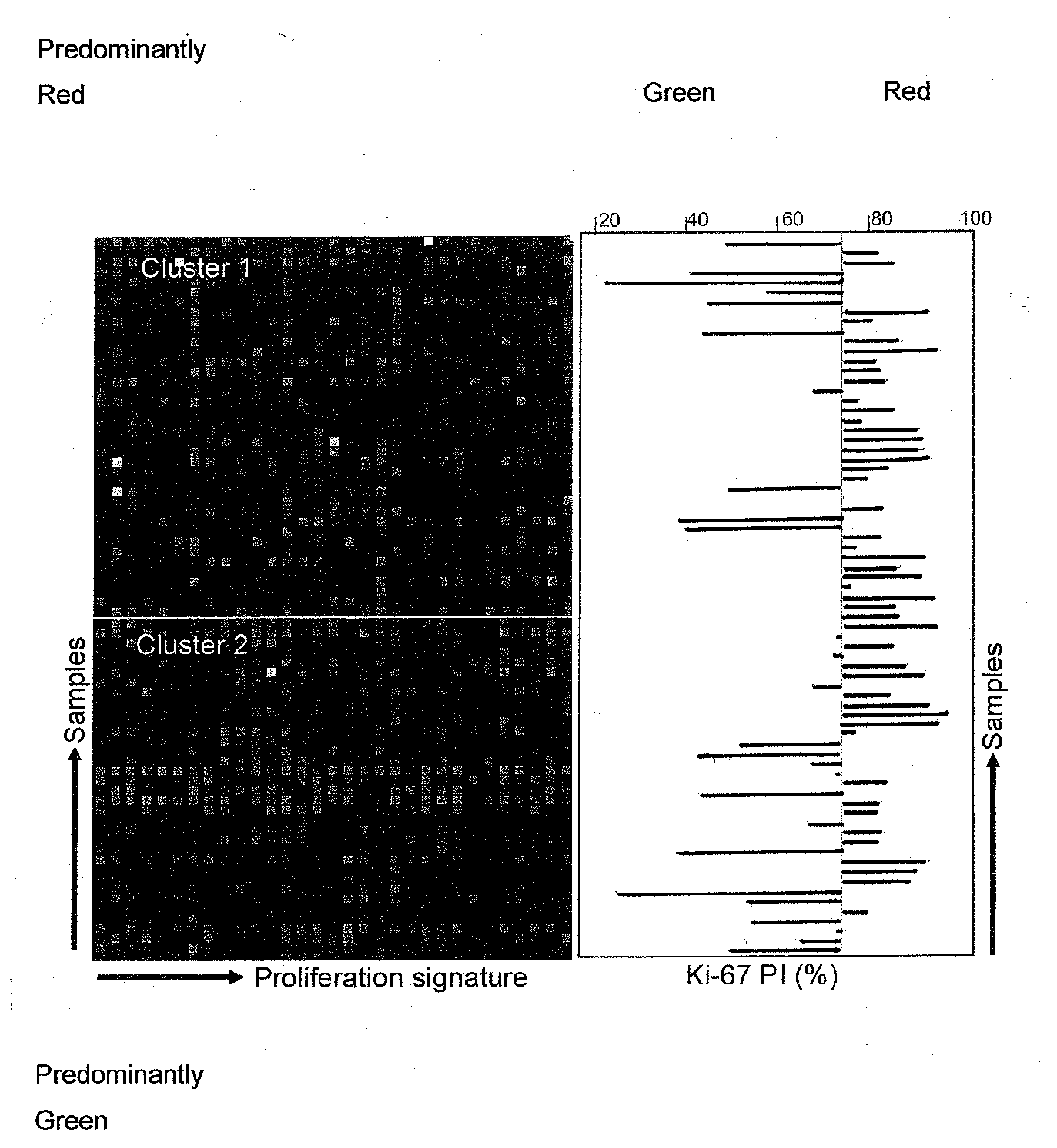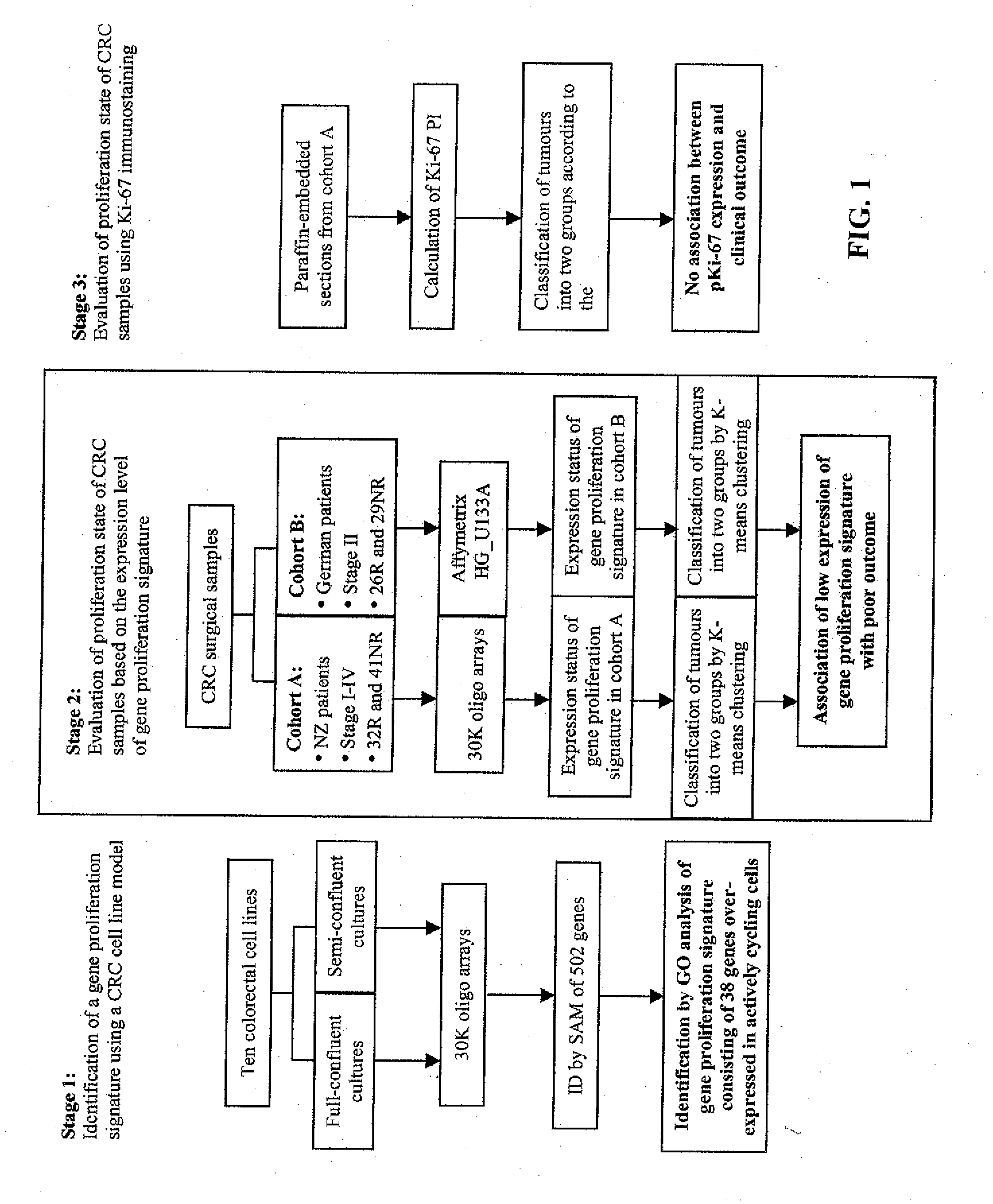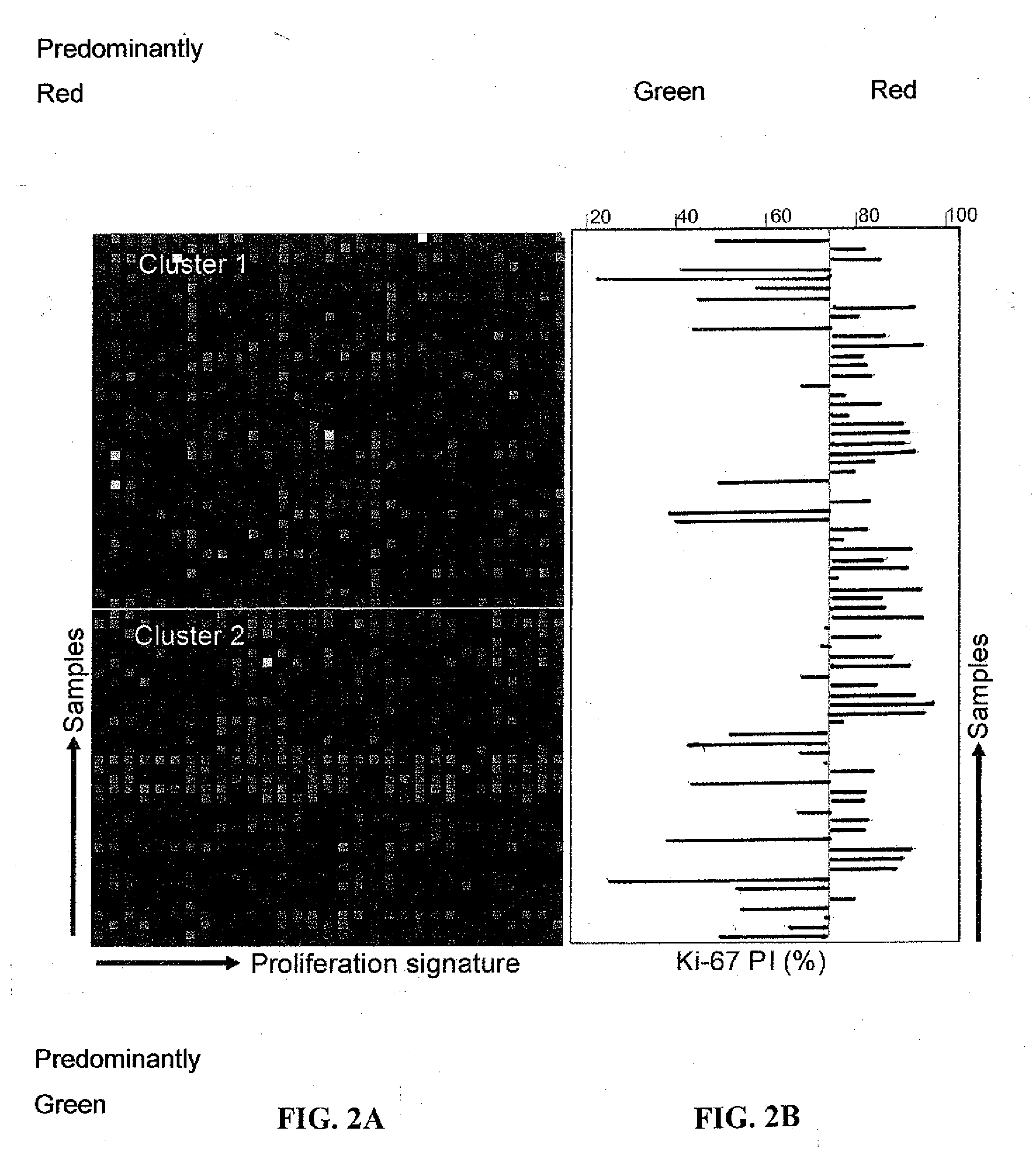Proliferation Signatures and Prognosis for Gastrointestinal Cancer
a prognosis and signature technology, applied in the field of gastrointestinal cancer, can solve the problems of inability to apply in a clinical context, inability to use ki-67 as a proliferation marker, and tumours with a similar pi may grow at dissimilar rates, so as to reduce the effect of individual variation and more robust prediction
- Summary
- Abstract
- Description
- Claims
- Application Information
AI Technical Summary
Problems solved by technology
Method used
Image
Examples
example 1
Cell Cultures
[0187]The experimental scheme is shown in FIG. 1. Ten colorectal cell lines were cultured and harvested at semi- and full-confluence. Gene expression profiles of the two growth stages were analyzed on 30,000 oligonucleotide arrays and a gene proliferation signature (GPS; Table C) was identified by gene ontology analysis of differentially expressed genes. Unsupervised clustering was then used to independently dichotomize two cohorts of clinical colorectal samples (Cohort A: 73 stage I-IV on oligo arrays, Cohort B: 55 stage II on Affymetrix chips) based on the similarities of the GPS expression. Ki-67 immunostaining was also performed on tissue sections from Cohort A tumours. Following this, the correlation between proliferation activity and clinico-pathologic parameters was investigated.
[0188]Ten colorectal cancer cell fines derived from different disease stages were included in this study: DLD-1, HCT-8, HCT-116, HT-29, LoVa, Ls174T, SK-CO-1, SW48, SW480, and SW620 (ATCC...
example 2
Patients
[0189]Two cohorts of patients were analysed. Cohort A included 73 New Zealand colorectal cancer patients who underwent surgery at Dunedin and Auckland hospitals between 1995 and 2000. These patients were part of a prospective cohort study and included all disease stages. Tumour samples were collected fresh from the operation theatre, snap frozen in liquid nitrogen and stored at −80° C. Specimens were reviewed by a single pathologist (H-S Y) and tumours were staged according to the TNM system (34). Of the 73 patients, 32 developed disease recurrence and 41 remained recurrence-free after a minimum of five years follow up. The median overall survival was 29.5 and 66 months for recurrent and recurrent-free patients, respectively. Twenty patients received 5-FU-based post-operative adjuvant chemotherapy and 12 patients received radiotherapy (7 pre- and 5 post-operative).
[0190]Cohort B included a group of 55 German colorectal patients who underwent surgery at the Technical Universi...
example 3
Array Preparation and Gene Expression Analysis
[0191]Cohort A tumours and cell lines: Tissue samples and cell lines were homogenised and RNA was extracted using Tri-Reagent (Progenz, Auckland, NZ). The RNA was then purified using RNeasy mini column (Qiagen, Victoria, Australia) according to the manufacture's protocol. Ten micrograms of total RNA extracted from each culture or tumour sample was oligo-dT primed and cDNA synthesis was carried out in the presence of aa-dUTP and Superscript II RNase H-Reverse Transcriptase (Invitrogen). Cy dyes were incorporated into cDNA using the indirect amino-allyl cDNA labelling method, cDNA derived from a pool of 12 different cell lines was used as the reference for all hybridizations. The Cy5-dUTP-tagged cDNA from an individual colorectal cell line or tissue sample was combined with Cy3-dUTP-tagged cDNA from reference sample. The mixture was then purified using a QiaQuick PCR purification Kit (Qiagen, Victoria, Australia) and co-hybridized to a mic...
PUM
| Property | Measurement | Unit |
|---|---|---|
| temperature | aaaaa | aaaaa |
| pH | aaaaa | aaaaa |
| pH | aaaaa | aaaaa |
Abstract
Description
Claims
Application Information
 Login to View More
Login to View More - R&D
- Intellectual Property
- Life Sciences
- Materials
- Tech Scout
- Unparalleled Data Quality
- Higher Quality Content
- 60% Fewer Hallucinations
Browse by: Latest US Patents, China's latest patents, Technical Efficacy Thesaurus, Application Domain, Technology Topic, Popular Technical Reports.
© 2025 PatSnap. All rights reserved.Legal|Privacy policy|Modern Slavery Act Transparency Statement|Sitemap|About US| Contact US: help@patsnap.com



